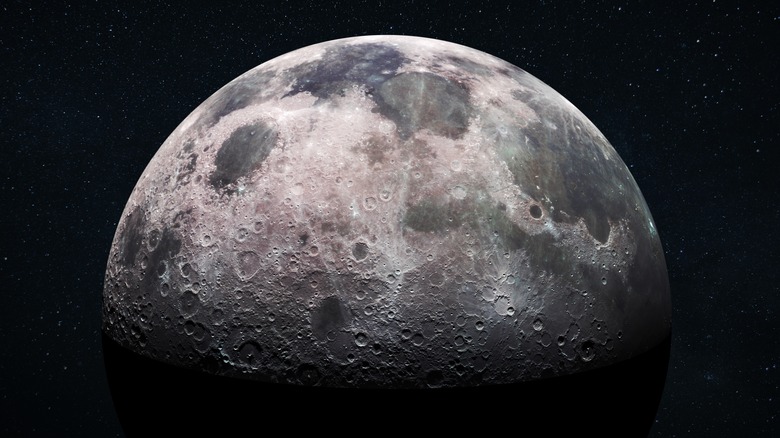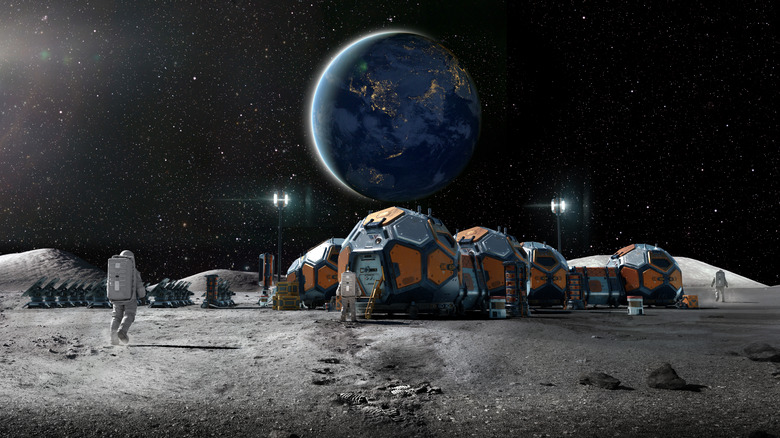Impulse Has A Plan To Deliver Infrastructure To The Moon And Beyond
Founded in 2021, Impulse Space has been seeking to change the game when it comes to space exploration. The company specializes in space mobility, meaning it helps to move spacecraft between orbits for scientific, commercial, and government purposes. Now, it is setting its sights on an ambitious new mobility project: transporting things to the moon.
Of course, NASA already has a system in place for delivering lightweight items to the moon — it even has a date to send humans back there for the first time in 50 years. However, larger things like lunar rovers, power systems, and living modules still lack solid in-space infrastructure for consistent delivery. Impulse Space believes this is a problem it can solve. It already has technology in place that can accelerate the construction of the spacecraft needed to begin building out human infrastructure on the moon.
Impulse Space plans to use a two-part system to get cargo to the moon. The first part is its existing Helios spacecraft which would be used for delivery from Earth to the moon. Impulse Space will also design and build a lunar lander which would detach from Helios to put items on the moon itself. It is an impressive vision, and the company seems ready to rise to the challenge.
The lofty goals of Impulse Space
For only being founded in 2021, Impulse Space has already got some impressive projects under its belt. Its spacecraft Helios has a same-day cargo delivery between orbits, and it can handle extremely large payloads. Its spacecraft Mira boasts the largest orbital maneuvers made by a nitrous-based system with a proven payload delivery history. It also offers rideshare services with its craft to move items between orbits.
Spearheading this vision is its founder and CEO, Tom Mueller. He's made his career in space propulsion, serving as the Chief Technology Officer of Propulsion at SpaceX, working on rockets like the company's Falcon 9. Mueller moved on from moving items to space to moving items within space when he founded Impulse Space. The company currently has missions planned up through 2028, and its Mira and Helios craft are fully booked between 2025 and 2026.
This fast-paced innovation and expansion leads Impulse Space to setting its sights on its moon mission. It anticipates that missions to the moon will begin in 2028, and each mission could deliver three tons of cargo. Granted, no specific cost is listed on its website for its services, though it claims to be a quite cost-effective option.
Why Impulse Space believes it can succeed
Impulse Space believes it is uniquely positioned to deliver on these promises, and its company history certainly backs that up. These moon missions will use launch vehicles that have already proven themselves to work repeatedly, cutting down the need to develop something new from scratch. For things that need to be developed, Impulse Space is already working on them, with planned tests well before the proposed 2028 start date.
What's more, there's the fact that space exploration is inherently risky and dangerous. But Impulse Space believes that using items and systems that have been tried and tested in space missions multiple times reduces that risk. On top of that, the company builds its components in-house, streamlining the entire operation. Impulse Space even plans to use the type of thrusters its spacecraft Mira uses for the lunar lander.
Impulse Space is passionate about contributing to a sustained, thriving human presence on the moon. It also believes the natural resources of the moon are worth exploring further with the right infrastructure. During a tumultuous time when NASA workers are leaving the agency rapidly, Impulse Space adds excitement and hope back into space exploration. It will be interesting to see what 2028 has to offer, regarding how the first of these moon missions begin.


